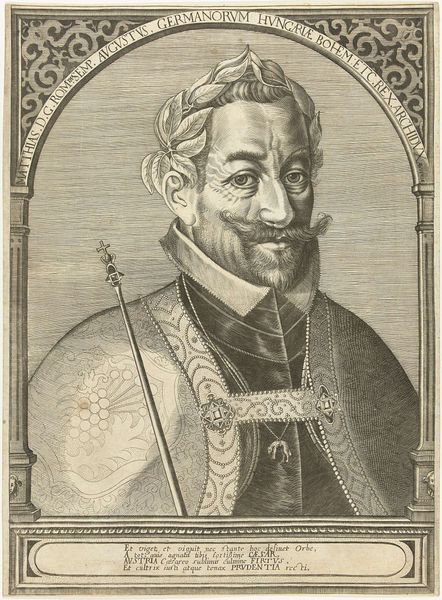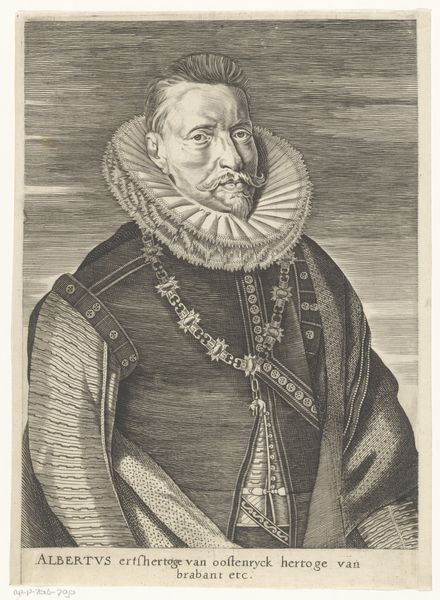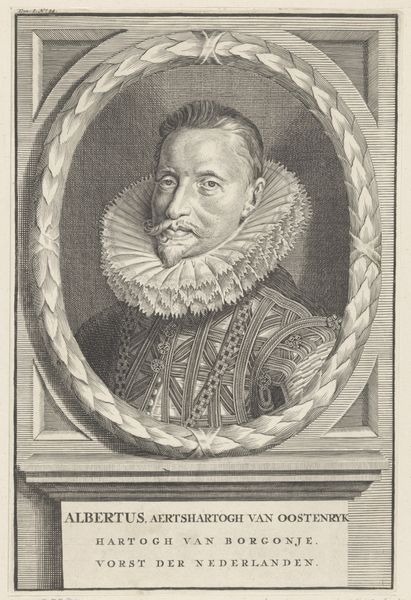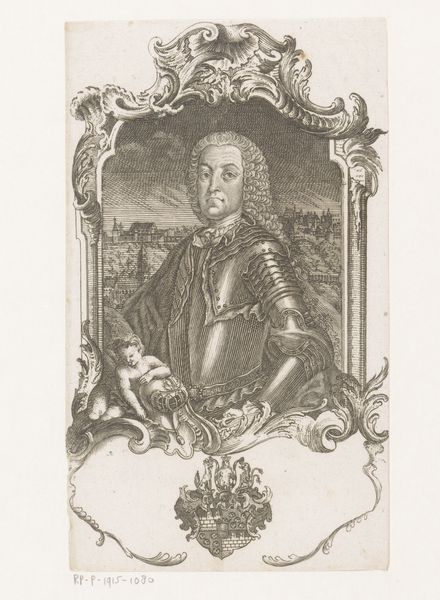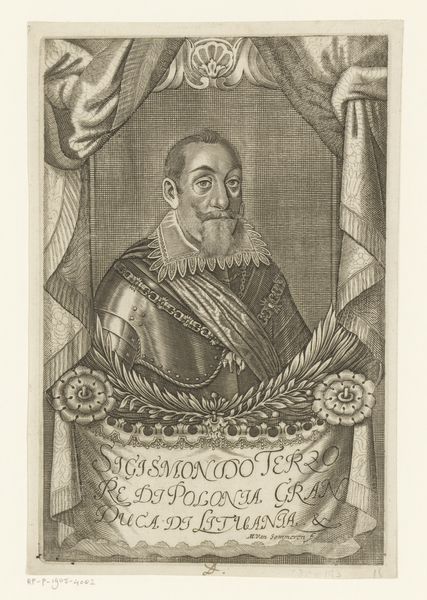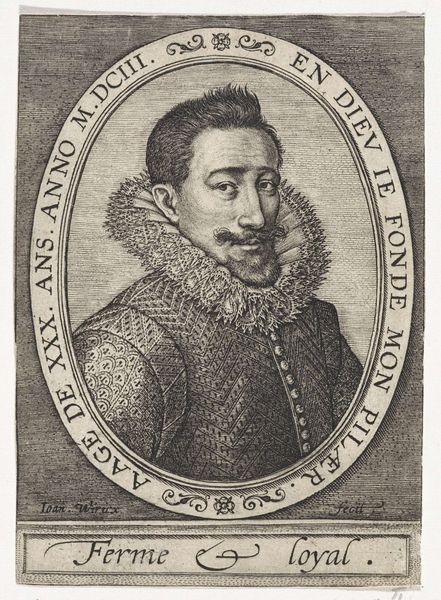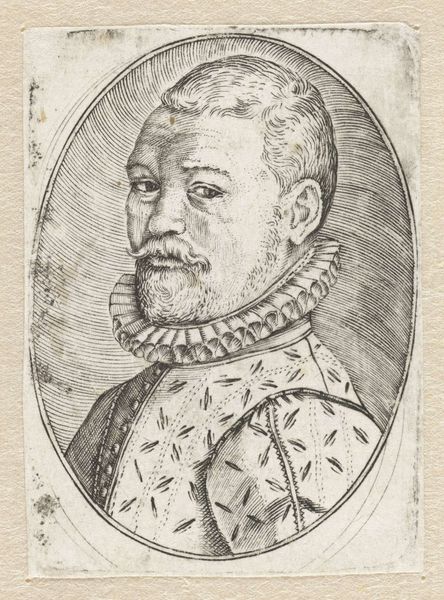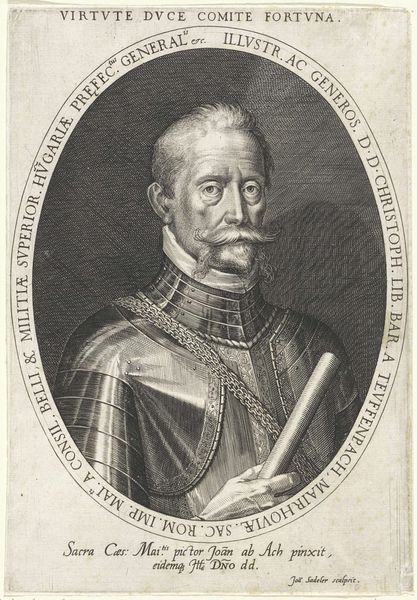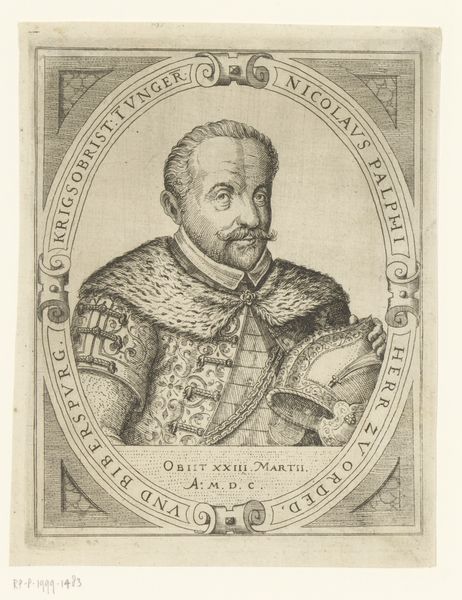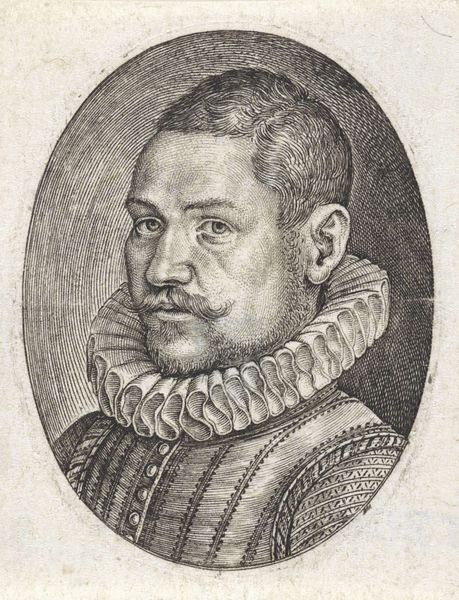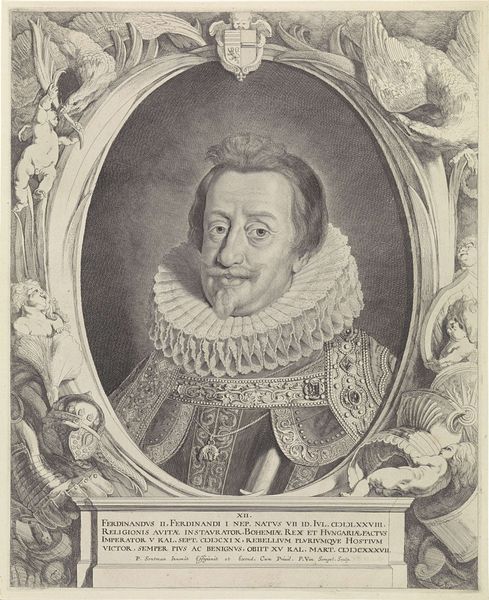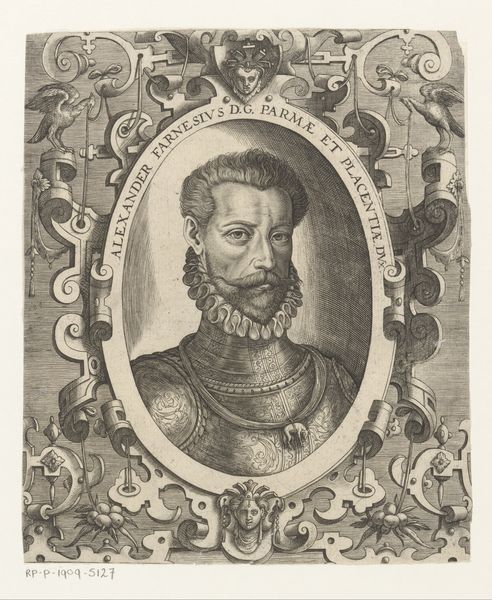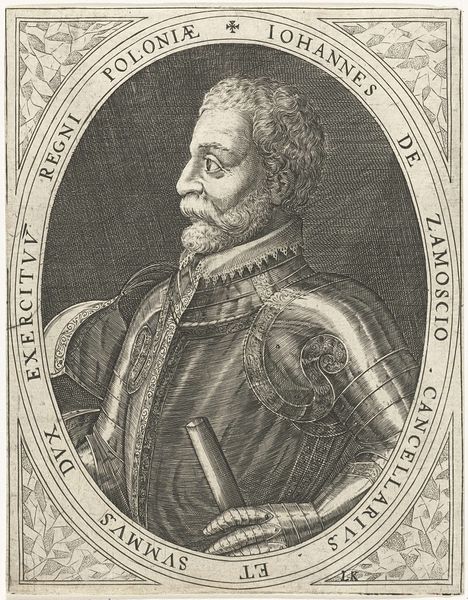
print, engraving
#
portrait
#
baroque
# print
#
history-painting
#
engraving
Dimensions: height 420 mm, width 287 mm
Copyright: Rijks Museum: Open Domain
Curator: What strikes you immediately about this piece? For me, it’s the interplay of line and shadow that builds a compelling formal structure. Editor: I’m drawn to the density of the engraving—all those crosshatched lines feel like they took an immense amount of time and skill. What can you tell me about the sitter? Curator: This engraving portrays Matthias of Austria. Its creation is dated to the 1610s or 1620s. Note how the engraving captures a commanding presence despite its rather muted monochrome palette. Editor: That monochrome, almost gray scale aesthetic, coupled with the elaborate garments, really speaks to the historical context and the materials employed—the metal plates, the inks. Can you expand on the printing process? Curator: Certainly. Engraving involves incising lines into a metal plate, which is then inked. The pressure required to transfer the ink allows for incredibly fine detail, as we see here. The use of engraving signifies status and power, lending gravity to the portrayal. Editor: Thinking about the act of creation makes me consider the labor involved and what role printing had in disseminating political images. Curator: Indeed. Let's look closer. Observe the laurel wreath—a classic symbol, appropriated by Matthias to suggest a parallel to great Roman leaders and, crucially, legitimate his power as Holy Roman Emperor. The rigid, upright posture reinforces authority, no? Editor: I can see how that uprightness supports a statement about absolute power, but I’m equally fascinated by the texture given to the textiles; that robe practically shimmers off the paper because of the artist's meticulous craftsmanship. Curator: It is a marvelous representation of a Baroque aristocratic image; perhaps its impact rests in the symbiosis between technical mastery and the careful, considered deployment of symbols and form. Editor: Looking closer at the materiality reminds us that artistic creation, even reproduction through printing, comes from intense labor and human ingenuity. Curator: I agree completely; focusing solely on the formal strategies and symbols within the image blinds us to other meanings. Editor: Exactly. Both viewpoints together add a deeper complexity to what this represents, who made it, and its original goal.
Comments
No comments
Be the first to comment and join the conversation on the ultimate creative platform.
